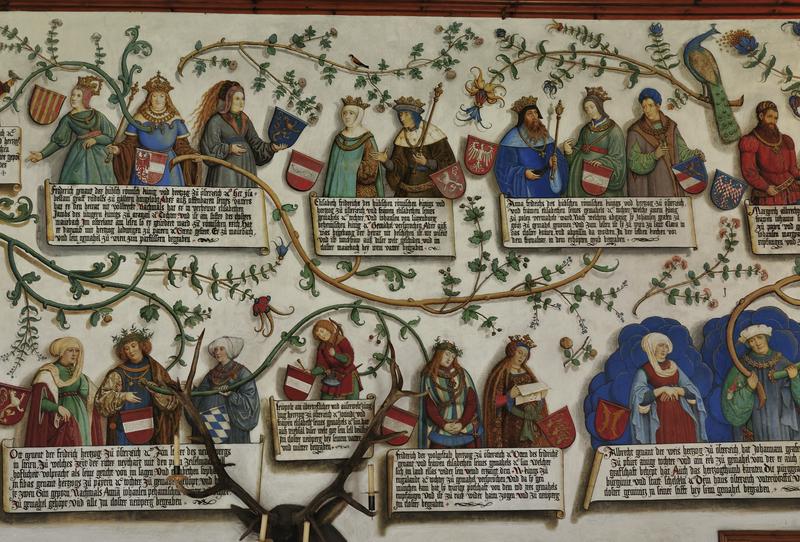Who Were the Habsburgs?
By | July 6, 2019

In terms of historically successful dynasties, few have had as little long term success as the House of Habsburg. At one point, their dynasty controlled the majority of continental Europe and its overseas territories. However, the factors that led to its success ultimately brought its downfall. This article is an overview of the complex history of the House of Habsburg.

The first patriarch of the house was a 10th-century count, called Guntram the Rich, who came from the Breisgau region of what is today Germany. It was Guntram’s grandson who in 1020 built a castle overlooking the Aar River in Switzerland that was named Habichtsburg (Hawk’s Castle). It was from this that the family took its famous name.

Through the 11th, 12th, and 13th centuries the Habsburgs slowly amassed power. Unlike other royal dynasties, they did not do so by war, but rather through arranged marriages and power consolidation. When opportunities arose, such as the end of another aristocratic house, the Habsburg filled in the vacuum. By doing so, they gained control of a growing list of territories as well as obtained high positions within the Catholic Church.

A true tipping point for the Habsburgs was during the reign of Count Rudolph IV, the great-grandson of Guntram. He was elected Holy Roman Emperor under the name Rudolph I and acquired the duchies of Austria and Styria. To do so, he did a very un-Habsburgian thing. He went to war and defeated his rival, the King of Bohemia at the Battle of Marchfeld in 1278.
For six centuries, these new territories formed the core of Habsburg power.

Habsburg power grew and reached one of its peaks under Maximilian I (1459-1519). Through marriages, he expanded the dynasty’s power into Spain and beyond. A famous adage describes the strategy of Habsburg power politics, Bella gerant alii, tu felix Austria nube – “Let others wage war: thou, happy Austria, marry.”
This allowed his grandson, Charles V, to arguably be one of the most powerful monarchs in history. As Holy Roman Emperor he had vast territories in Germany and Northern Italy, he had direct rule over Austria and was King of Spain. Thus he became ruler, too of the recently colonized and conquered land that Spain was consolidating in the western hemisphere. However, Charles’s reign was marked by the bloody wars of the Protestant Reformation.

After Charles V, the Habsburg became divided into Austrian and Spanish branches. It was also about this time that the Habsburg Achilles heel became apparent: Inbreeding. This resulted in disabilities, deformities and eventually the end of the Spanish branch of the Habsburg dynasty after Charles II (1661-1700), also called Charles the Bewitched. Charles II was physically and possibly mentally disabled suffering from genetic disorders such as pituitary hormone deficiency and distal renal tubular acidosis, a cause of kidney failure.
Much of the inbreeding is shown in the very pronounced jaw of the Habsburgs that is shown in various portraiture of the period. In the case of Charles II, he suffered from an engorged tongue that made him difficult to understand, baldness by age 35, epilepsy, seizures, senility, and impotence. He died at age 38. Charles II was the result of eleven marriages between close kin of the Spanish Habsburg line. His mother was his father’s niece and his grandmother was also his aunt.

The male Austrian line of the Habsburg died out soon after, but the Habsburgs carried on after the ascendancy of Maria Theresa (1717-1780). She was the daughter of Charles IV and became the only woman ruler of the Habsburg lands in its history. She married Francis the Duke of Lorraine. Consequently, their son, Joseph II was of the House of Habsburg-Lorraine and is considered one of chief “Enlightened Monarchs” of the Enlightenment. Joseph II is probably best known for his attempts at modernizing reforms and sponsoring of the celebrated composer, Wolfgang Amadeus Mozart.
The House lost the title of Holy Roman Emperor after it was dissolved by Napoleon, but the family continued on as rulers of the Austrian Empire and then Austria-Hungary until World War I.

The aftermath of World War I resulted in Charles I all but abdicating and the first Austrian republic being established. All the Habsburgs were then kicked out of the country unless they renounced any territorial claims or rights to rule. The Habsburgs did not give up such claims until the 1960s.

